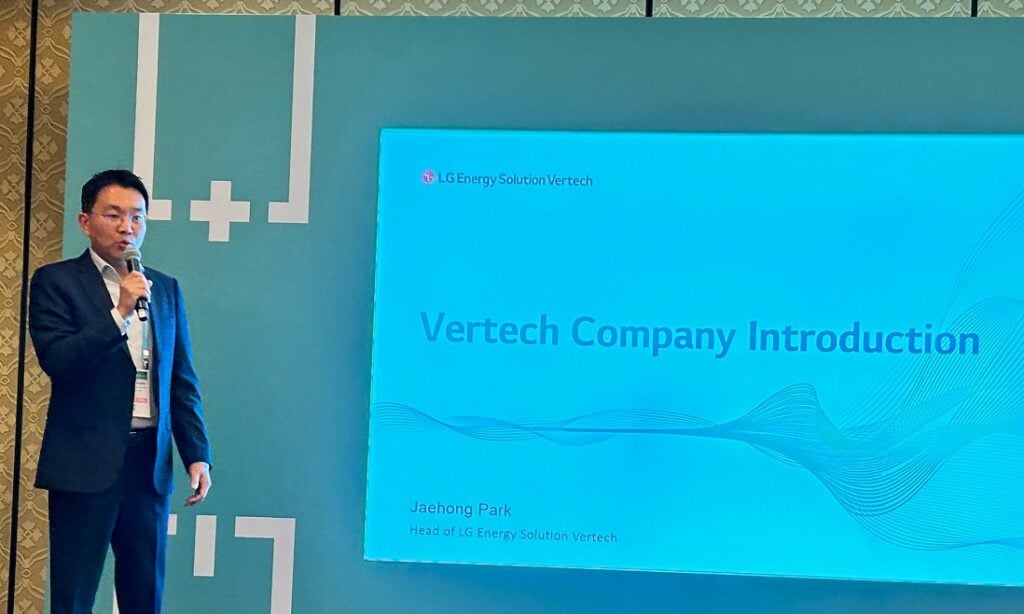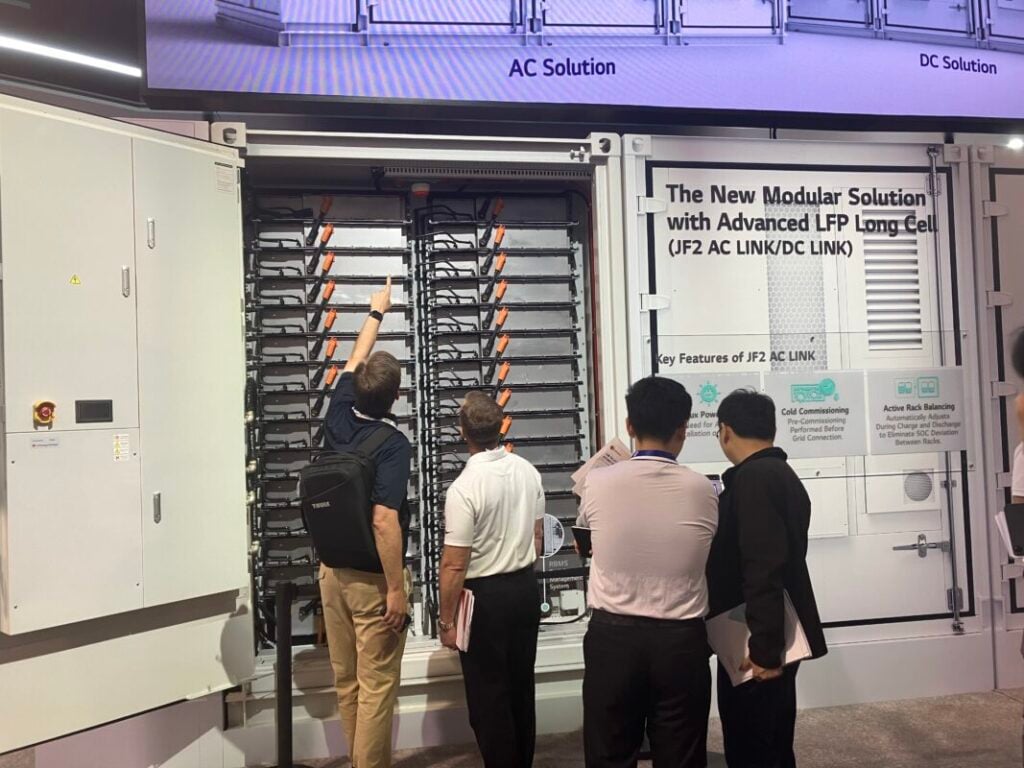
Jaehong Park, CEO of LG Energy Solution Vertech takes part in the first of our annual series of industry Q&A articles reflecting on the year just gone and looking to the year ahead.
When LG Energy Solution acquired the system integrator NEC Energy Solutions in 2021, speculation was rife across the industry about what would follow.
Enjoy 12 months of exclusive analysis
- Regular insight and analysis of the industry’s biggest developments
- In-depth interviews with the industry’s leading figures
- Annual digital subscription to the PV Tech Power journal
- Discounts on Solar Media’s portfolio of events, in-person and virtual
As regular readers of the site will know, it led to the South Korean battery cell and systems manufacturer launching LG Energy Solution Vertech (LG ES Vertech), a system integrator subsidiary focused primarily on the North American large-scale battery energy storage system (BESS) market.
This means leveraging the upstream capabilities of its parent company to create a vertically integrated business model that, in the words of LG ES Vertech CEO Jaehong Park earlier this year, “never has to worry about cell supply” (Premium access).
With a 16GWh annual capacity of production lines in the US dedicated to lithium iron phosphate (LFP) cells and packs for stationary BESS applications in the process of getting up and running, the downstream system integration arm has, just in the past few months, announced an 8GWh multi-year deal with BESS developer Terra-Gen and a 7.5GWh agreement with Excelsior Energy Capital.
In September, at the RE+ clean energy trade show in California, Park told ESN Premium that the scaled-up adoption of clean energy in the US is a megatrend bigger than politics that will continue to go strong.
Jaehong Park, CEO of LG Energy Solution Vertech takes part in the first of our annual series of Q&A articles reflecting on the year just gone and looking to the year ahead.
What did 2024 mean for the energy storage industry from your company’s perspective and the bigger picture?
Growth! For the energy storage industry, the records set in North America for battery storage deployments and orders continued to set new highs. While such growth is not unexpected, it highlights how the industry has made improvements in safety, system level—not just battery cell—designs and costs, and in delivering value from assets deployed.
Here at LG Energy Solution Vertech, in 2024, we concluded agreements for more than three times the volume of projects that we contracted last year, a change which is linked to the commencement of US manufacturing commencing mid-2025 for battery cells and packs.
For the industry at large, such agreements with leading independent power producers (IPPs) validates the industry’s desire for integrated storage systems from leading battery OEMs committed to investing in large-scale domestic manufacturing facilities.
What do you think 2025 will hold, firstly in terms of things to look forward to, but also in terms of challenges ahead?
There’s clearly much to look forward to in 2025 as the energy storage system (ESS) market continues its growth trajectory. Increasing production of US-made battery cells, packs and modular systems is sure to be one of next year’s major achievements.
As with all high-growth industries within emerging markets, there is always the potential for challenges to emerge. I’m hoping for less uncertainty in regulatory and legislative issues, although I believe the industry has taken, and is continuing to take, a collective approach to minimise disruption to our industry.
The last year has seen incredible growth in energy storage deployments in key markets worldwide, but what are some things that people may not be aware of when considering the development of mature and emerging markets?
A key point to consider is that unique local factors, such as regulatory environments, grid infrastructure, and economic conditions, heavily influence development in all markets.

Mature markets have a significant advantage in the depth of their existing industry expertise.
For example, in the US, we already have talented resources, mature technologies, developed certifications, and regulations in states that have accelerated ESS innovation. Moreover, these markets have excelled in optimising revenue-generating opportunities for battery storage projects, such as participating in ancillary services, capacity markets, and energy arbitrage.
Conversely, emerging markets face some challenges including less favourable regulatory frameworks and a lack of established financial models for energy storage. While these markets hold immense potential, progress is often slower and are more short-term policy dependent.
Understanding these contrasts is crucial for stakeholders aiming to navigate the complexities of global energy storage development effectively.
“Safety should always be our industry’s first priority. The energy storage industry has made huge advances, but with the size of storage projects now being deployed, safety is, and must always be, our primary focus.”
Jaehong Park, LG ES Vertech
Are there any major market trends that our readers should watch, perhaps related to technology, financing, or other aspects of the industry?
I expect to see considerable attention given to the development of domestic supply chains, or at least with suppliers based in countries with positive relationships with the US.
From a broader market perspective, increasing activity from regulated utilities in building, owning, and operating energy storage projects is anticipated to become more prevalent next year.
It will also be fascinating to see how the industry’s electric energy generators react to almost unprecedented forecast growth in power demand, driven by data centres’ demands and more. Especially as this demand may drive longer duration energy storage systems, [equating to around] 8-hours duration.
What should the industry’s priorities be in 2025 and beyond?
Safety should always be our industry’s first priority. The energy storage industry has made huge advances, but with the size of storage projects now being deployed, safety is, and must always be, our primary focus. Having robust safety standards that make product and system safety requirements clear is something the industry continues to address.
We should also continue our efforts as an industry to make lawmakers aware of the value energy storage systems provide to the nation’s electric grid.
Our rapidly maturing industry plays an instrumental role in the modern energy grid, and it’s important that this role is understood. This is of equal importance to the well-paid jobs that battery manufacturing facilities are delivering to multiple US states.

